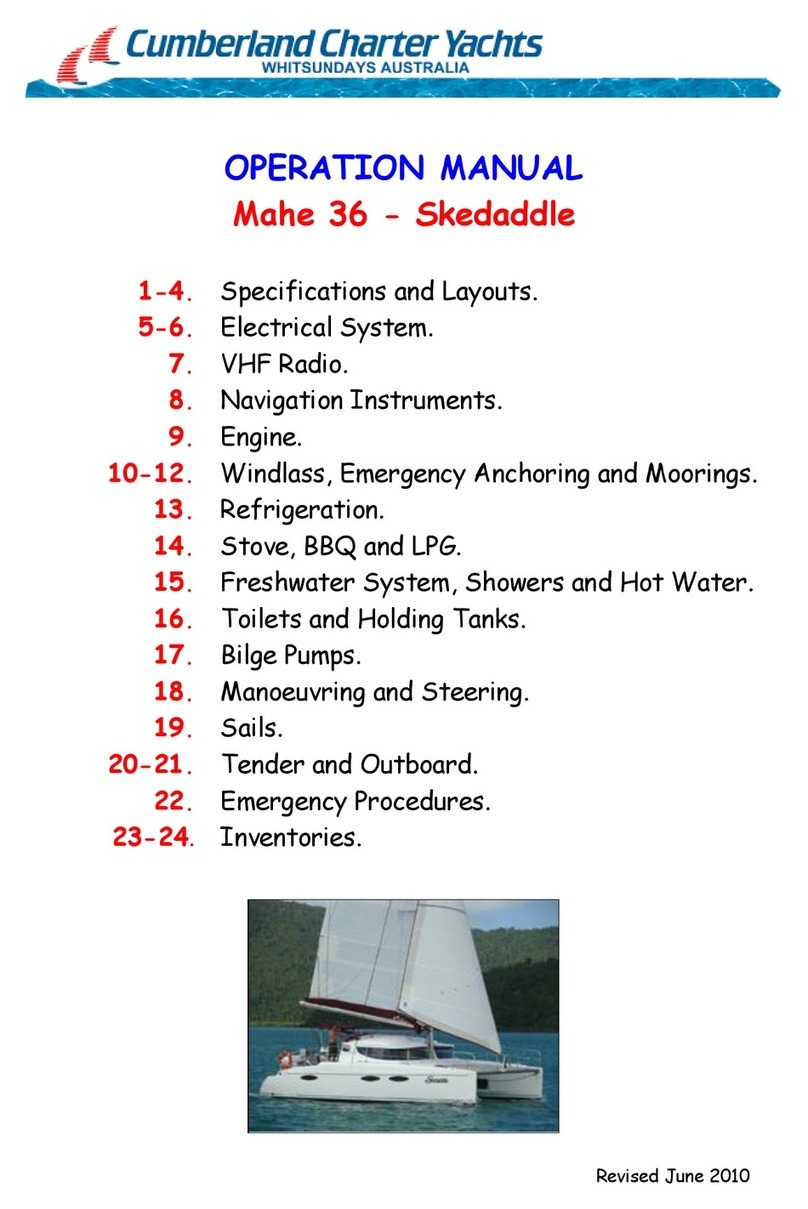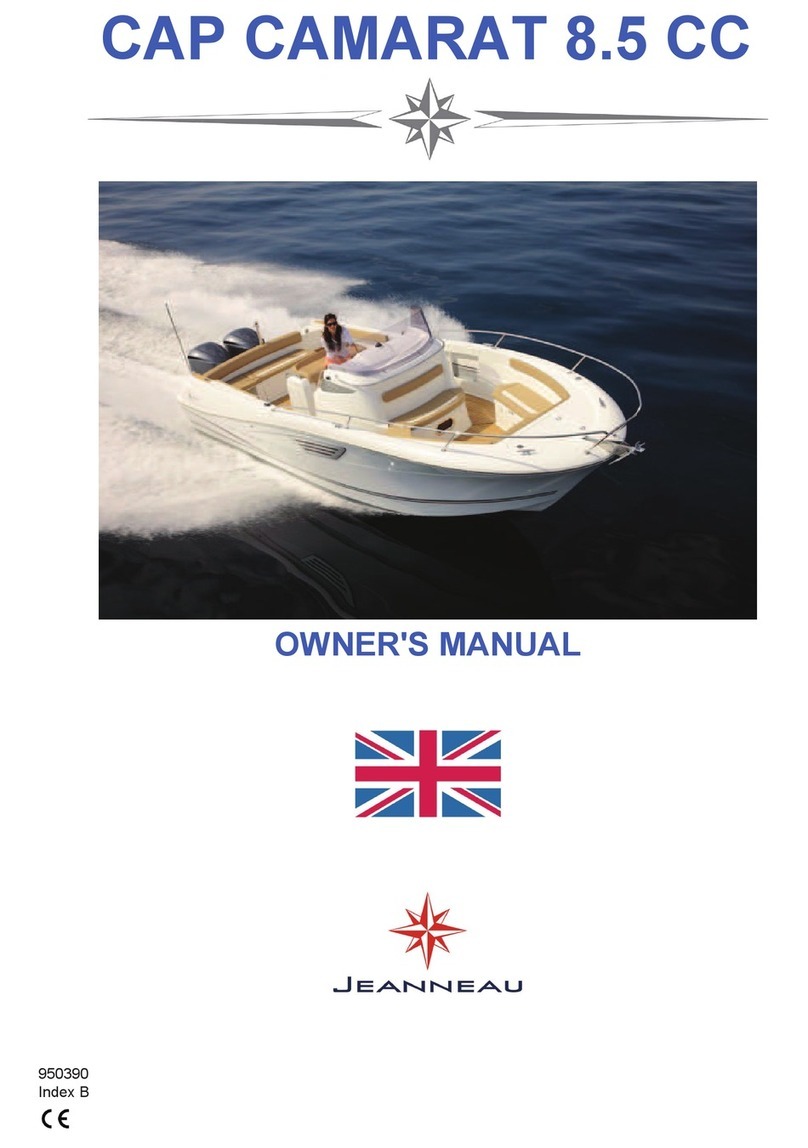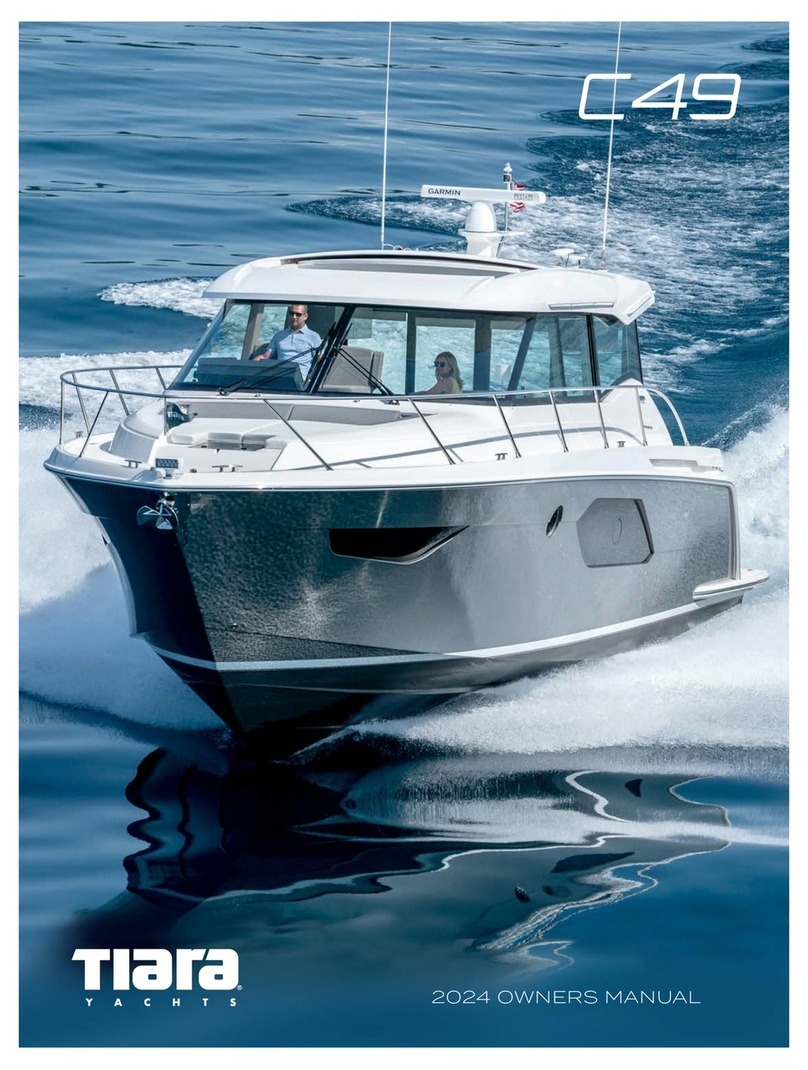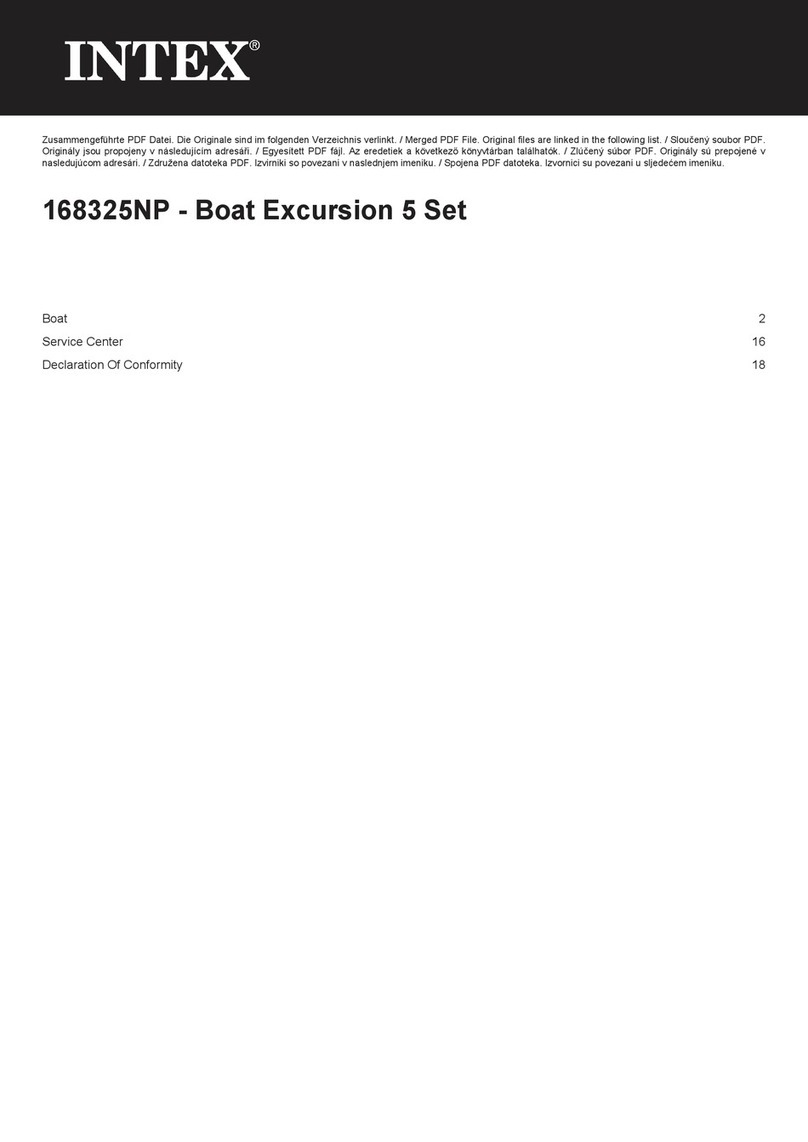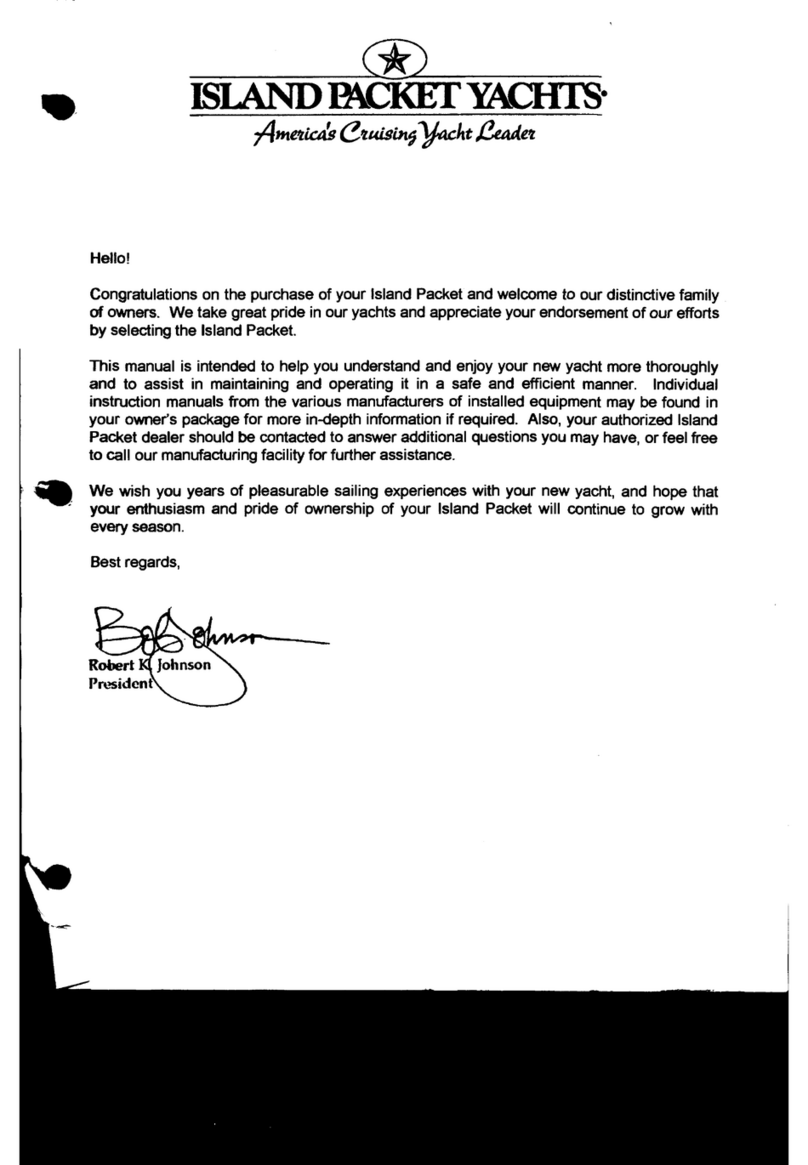OPERATION MANUAL
Latitude 1035 - Latitude Lady
Page 5 –Electrical System
Electrical System
Latitude Lady has ample power with an easy to use 12 volt system with separate
power supply for the house and engines. The vessel also utilises 240 volt shore
power when in a marina for battery charging.
Note: Both engines must be run a minimum of three hours daily (60 minutes in the
morning, 60 minutes during the day and 60 minutes after 3pm) to charge the house
batteries.
No battery switches should be touched during charter unless in an emergency or
advised to by base.
All electrical lights and appliances are controlled from the circuit breaker switches
at the main front electrical panel.
The batteries are recharged by the engines, the solar panel and shore power when
in a marina berth. Although this provides ample power it is necessary to keep
power consumption down by turning off lights or appliances when not in use.
Because Latitude Lady has a totally separate engine battery system you will always
have power to start your engines even when the house batteries are flat.
These batteries are recharged by the engines and normal motoring will be sufficient
to recharge them. The house batteries are located in the locker under the saloon
seats and the isolation switch is located in the locker on the port side behind the
saloon seat.
Battery switches are only for use in emergencies when instructed by your base.
Shore power
When you are in port, use the extension lead to plug into shore power. The inlet is on
the port side behind the door. The battery charger turns on automatically.
DVD/CD Stereo/TV
To operate the CD/DVD player and TV ensure the TV switch is on. The CD Player is
compatible with CDs in MP3 format.
Please note that television reception around the Islands can be fickle and if there
is an event you want to watch we suggest mooring at a resort.







